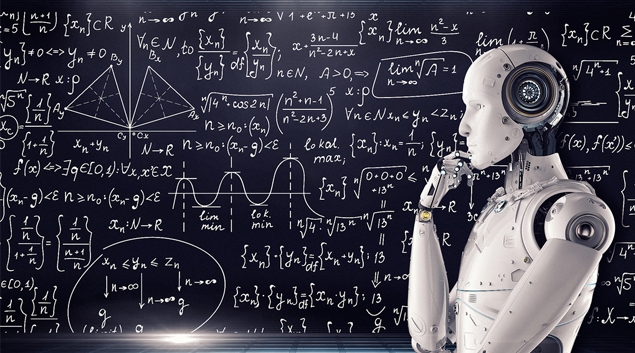Jun 26, 2019
The NASA Orbiter That Turned Lunar Science On Its Head
Posted by Bruce Dorminey in category: science
Now ten years into its mission and counting, NASA’s Lunar Reconnaissance Orbiter has pretty much turned lunar science on its head.
Now ten years into its mission and counting, NASA’s Lunar Reconnaissance Orbiter has pretty much turned lunar science on its head.
More than a half-century ago, the ‘cognitive revolution’, with the influential tenet ‘cognition is computation’, launched the investigation of the mind through a multidisciplinary endeavour called cognitive science. Despite significant diversity of views regarding its definition and intended scope, this new science, explicitly named in the singular, was meant to have a cohesive subject matter, complementary methods and integrated theories. Multiple signs, however, suggest that over time the prospect of an integrated cohesive science has not materialized. Here we investigate the status of the field in a data-informed manner, focusing on four indicators, two bibliometric and two socio-institutional. These indicators consistently show that the devised multi-disciplinary program failed to transition to a mature inter-disciplinary coherent field. Bibliometrically, the field has been largely subsumed by (cognitive) psychology, and educationally, it exhibits a striking lack of curricular consensus, raising questions about the future of the cognitive science enterprise.

Artificial Intelligence (AI) is an emerging field of computer programming that is already changing the way we interact online and in real life, but the term ‘intelligence’ has been poorly defined. Rather than focusing on smarts, researchers should be looking at the implications and viability of artificial consciousness as that’s the real driver behind intelligent decisions.
Consciousness rather than intelligence should be the true measure of AI. At the moment, despite all our efforts, there’s none.
Significant advances have been made in the field of AI over the past decade, in particular with machine learning, but artificial intelligence itself remains elusive. Instead, what we have is artificial serfs—computers with the ability to trawl through billions of interactions and arrive at conclusions, exposing trends and providing recommendations, but they’re blind to any real intelligence. What’s needed is artificial awareness.

Elon Musk has called AI the “biggest existential threat” facing humanity and likened it to “summoning a demon,”[1] while Stephen Hawking thought it would be the “worst event” in the history of civilization and could “end with humans being replaced.”[2] Although this sounds alarmist, like something from a science fiction movie, both concerns are founded on a well-established scientific premise found in biology—the principle of competitive exclusion.[3]
Continue reading “Is artificial consciousness the solution to AI?” »
Tags: AI, Artificial Intelligence
21st Century Medicine has developed an entire platform technology focused on the creation and commercialization of hypothermic preservation and cryopreservation techniques that enable protection, preservation, transportation, storage & future use of valuable living systems. These developments have taken science far beyond conventional preservation limits. 21CM scientists continue to prove long-term protection and preservation of complex living systems is not only possible, but commercially viable.
It means that a vital link has been created that we call “Bio Logistics”.
Biopharmaceutical companies get a larger window in which to test new drug candidates on viable premade and cryopreserved tissue slices that function like fresh.
 © Provided by Bauer Media Pty Ltd A study published in the journal Nature Medicine found that eating cheese can lead to a longer lifespan.
© Provided by Bauer Media Pty Ltd A study published in the journal Nature Medicine found that eating cheese can lead to a longer lifespan.
Every now and again, a study is released that makes our heart skip a beat.
Recently, research published in the journal Nature Medicine found that eating cheese can lead to a longer lifespan (and it wasn’t even satire!).
Gunsalus agrees that the Sato case highlights some of the problems with misconduct investigations, and says that if shortcomings emerge, further reviews may be needed. She suggests institutional panels should include external members and that officials should also use a standardized checklist to strengthen their processes. “There should be some way for journals, funders, patients and others to be assured of the credibility and thoroughness of university reviews,” says Gunsalus.
Detailed analysis of misconduct investigations into huge research fraud suggests institutional probes aren’t rigorous enough.
An intriguing experimental result, known as “the phantom leaf effect,” if fully verified, may be an example of some or even all of these biofield processes. In these experiments, coronal discharge or the Kirlian photographic effect reveals a field effect in the morphological form of an intact living leaf even after part of the leaf is severed. This suggests an analogy to the subjective experience of a phantom limb reported by patients after the limb has been amputated. There might be a persisting biofield that represents the amputatedlimb. First described by Adamenko and reported by Tiller and by Ostrander and Schroeder, more recent validating experiments have been performed with detection methods of greater precision; these are summarized in Hubacher. In his most recent publication, Hubacher performed the experiment with highest definition photographic samples using the largest number of samples to date. Of 137 leaves severed and imaged, 96 (70%) demonstrated clear phantoms.
This article briefly reviews the biofield hypothesis and its scientific literature. Evidence for the existence of the biofield now exists, and current theoretical foundations are now being developed. A review of the biofield and related topics from the perspective of physical science is needed to identify a common body of knowledge and evaluate possible underlying principles of origin of the biofield. The properties of such a field could be based on electromagnetic fields, coherent states, biophotons, quantum and quantum-like processes, and ultimately the quantum vacuum. Given this evidence, we intend to inquire and discuss how the existence of the biofield challenges reductionist approaches and presents its own challenges regarding the origin and source of the biofield, the specific evidence for its existence, its relation to biology, and last but not least, how it may inform an integrated understanding of consciousness and the living universe.
Key Words: Biofield, quantum mechanics, physics.
Continue reading “Biofield Science: Current Physics Perspectives” »
Russia’s beleaguered space science program is hoping for a rare triumph this month. Spektr-RG, an x-ray satellite to be launched on 21 June from Kazakhstan, aims to map all of the estimated 100,000 galaxy clusters that can be seen across the universe. Containing as many as 1000 galaxies and the mass of 1 million billion suns, the clusters are the largest structures bound by gravity in the universe. Surveying them should shed light on the evolution of the universe and the nature of the dark energy that is accelerating its expansion.
Spektr-RG x-ray mission will be nation’s only space observatory.